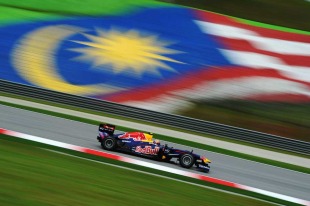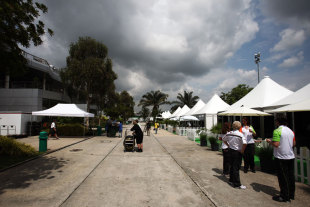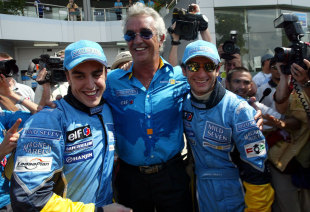
- Race:
- Malaysian Grand Prix
There is always a reluctance to leave Melbourne, particularly on a sunny Monday morning as the city goes about its usual busy life as if the grand prix hasn't happened. That's the thing about Melbourne. While more than 300,000 people passed through the gates over the four days (yes, they had track events on the Thursday) and 114,000 attended on Sunday, the grand prix is, in basic terms, just another major event in this cosmopolitan city.
The Melburnians - well, most of them, given that there will always be objections to the Victoria government spending £33m to subsidise the race each year - enjoy having us. But, on Monday, everyone moves on. Literally, in the case of the 12 F1 teams, up most of the night packing their gear into the Boeing 747 containers, ready for immediate shipment in time for next weekend's race at Sepang.
If you think the grand prix in Melbourne is rather detached from the metropolis (unlike Adelaide, a much smaller city that totally embraced the race between 1985 and 1995), then you should try going to Kuala Lumpur. Apart from Petronas using the occasion to play on local business loyalty and flag up the event, you simply would not know this country was hosting a round of the F1 world championship.
Motorsport has tenuous roots in Malaysia. There were road races in Selangor in the 1960s and sports car racing at Shah Alam but, judging by the sometimes fast and furious driving on the road, you get the impression that this is the country's principle form of motoring sport. Added to which, the Sepang circuit is 40 miles south of Kuala Lumpur and tucked out of sight, close by the international airport. Which is a clue regarding the choice of location for this track. Here is evidence of packaged F1 introduced in the late 1990s; a clinical track built to an FIA template and located close to an international airport and hotels.

The answer was to find somewhere quite literally inbetween; in the first instance a golf resort hotel with speed humps designed to rip the sump off any car proceeding above 5 mph in order to protect the safety of players lumbering between the fifth and sixth holes.
The 19th hole turned out to be first class, extremely friendly staff always ready to help, including a man whose sole occupation seemed to be walking from floor to floor shouldering a plunger with the pride of a member of the Household Cavalry; which, in a manner of speaking, he was given that the sanitary arrangements were - how do I put this - tricky and at risk of unfortunate flooding if you did not have the correct wrist action when flushing.
Traffic into and out of the circuit is not a problem. That's because no one comes to a race where the F1 personnel seem to outnumber the spectators, certainly on Friday and Saturday. The locals are not stupid. Unable to afford admission to the impressive grandstands with fancy roofs, they shun the alternative of standing in the heat and humidity of enclosures that, with the exception of a few palm trees, offer no protection.

Occasionally, of course, needs must. In 2003, when Fernando Alonso put his Renault on pole for the first time in his career, Flavio Briatore couldn't wait to high profile with the media immediately after qualifying. Excitable at the best of times when his boys were doing well, this prophetic development must have had Flavio's adrenalin shooting off the flow chart as he sat at the pit wall.
Unfortunately, the Renault uniform of the day was a light blue shirt. Let's just say that Flav's perspiring image would never have made it to the pages of Vogue as his shirt swiftly broke into a darker shade of blue in unfortunate places. But it would have been an appropriate reflection of a race that does not rank high on the list 'must-see' grands prix.
Maurice Hamilton writes for ESPN F1 in the build-up to each Grand Prix.
© ESPN Sports Media Ltd.
 Maurice Hamilton writes for ESPN F1. A veteran journalist in the paddock, Maurice Hamilton has been part of the Formula One scene since 1977 and was the Observer's motor racing correspondent for 20 years. He has written several books as well as commentating on Formula One for BBC Radio 5 Live
Maurice Hamilton writes for ESPN F1. A veteran journalist in the paddock, Maurice Hamilton has been part of the Formula One scene since 1977 and was the Observer's motor racing correspondent for 20 years. He has written several books as well as commentating on Formula One for BBC Radio 5 Live

